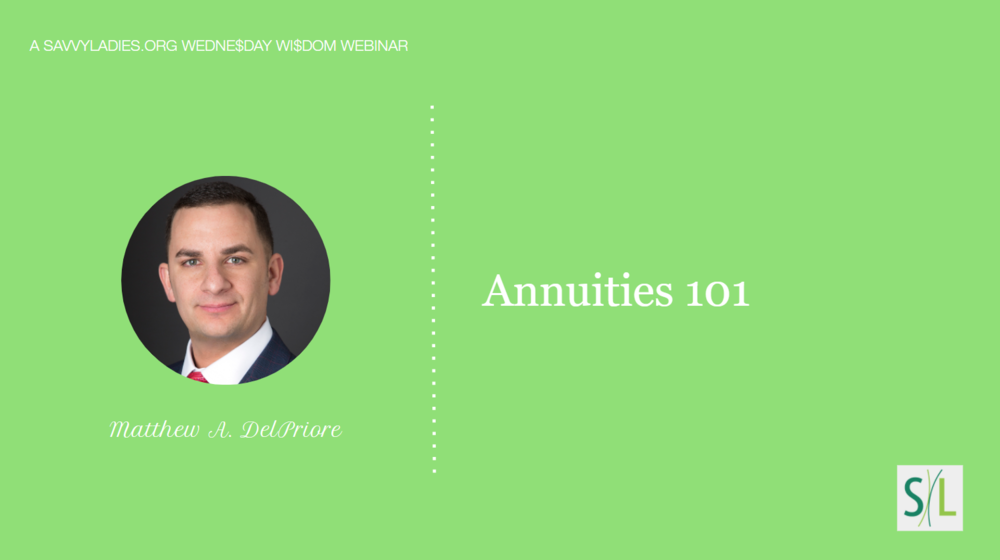
Annuities are an investment vehicle with a class of its own. An insurance like investment that has many distinct characteristics compared to traditional investments such as stocks, bonds, and mutual funds. Tax treatment, income needs, death benefit needs, and the various types of annuity riders and features all need to be closely examined. Come learn more about what an annuity is and how it may or may not fit in with your personal financial planning needs.
About Matthew:

Matthew A. DelPriore, CFP®, MSFS, CFS – Director of Financial Planning, Financial Planner, Investment Adviser Representative
Serving as a Financial Planner, Matthew began his career in the financial services industry in 2005. He graduated cum laude from Baruch College with a Bachelors of Business Administration in Finance. He spent nearly three years as an in house case consultant. During this time, he created and designed personal financial plans for the successful planners within the firm. Understanding the importance of creating and building long lasting relationships, as well as his passion for helping individuals reach their financial goals, is what inspired him to build his own Financial Planning practice.
At Fortis Lux Financial, Matthew’s primary focus is to ensure his clients have a financial game plan for the road ahead. Through the Financial Planning process, he works closely with his clients to carefully understand their personal objectives, goals, and concerns. From there, he will assist them in creating strategies that are specific to his client’s needs.
His areas of primary focus are Financial Planning, Investment Planning, and Retirement Planning. He earned the CERTIFIED FINANCIAL PLANNER™ designation as well as the Certified Fund Specialist® designation. Matthew also holds his series 7, 63, and Life & Health Insurance licenses.
Matthew is an active member of the Financial Planning Association of NY. He also serves as a part of the FPA Pro Bono committee, where he helps spread financial literacy to various individuals and families.
Matthew resides in Matawan, NJ with his wife Nichole. His outside interests include traveling, fine dining, snowboarding, and golf.



